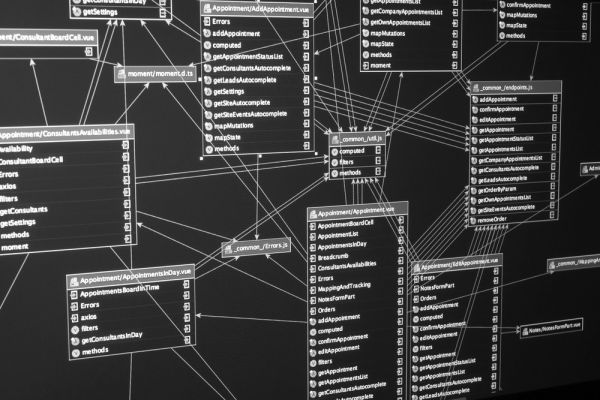Navigation

Related Post
Object Relational Mapping – ORM
Object Relational Mapping, or ORM, is a programming method that connects data stored in a database with objects used in programming languages. This technique allows developers to work with database data as if it were regular code objects, simplifying how applications handle stored information.
ORM tools help bridge the gap between structured database tables and the flexible nature of programming code. Instead of writing raw SQL queries, developers use ORM to translate data back and forth automatically. This process reduces coding effort, lowers the chance of errors, and improves consistency between the database and the application.
Key Aspects
- ORM tools allow developers to use familiar programming code to interact with database records instead of writing SQL queries manually.
- ORM promotes cleaner and more maintainable code by aligning database tables with programming objects like classes and variables.
- Popular ORM tools include Hibernate for Java, Entity Framework for .NET, and SQLAlchemy for Python.
- ORMs support important database operations, such as creating, reading, updating, and deleting records, which are often called CRUD operations.
- While powerful, ORMs can sometimes reduce performance in complex queries, so developers must understand when to optimize with raw SQL.
ORM Simplifies Database Access
Object Relational Mapping makes it easier for programmers to interact with databases using familiar programming concepts. Instead of writing SQL queries, they can use standard language features, such as calling a method or setting a property, to read or update a record. This is especially useful in applications that frequently access or modify data, such as websites or mobile apps, because the process becomes more predictable and organized.
ORM also helps developers avoid repetitive tasks. The ORM handles many background steps once the connection between a program and the database is defined. For example, when saving an object in code, the ORM knows how to translate it into a proper database command. This saves time and reduces the chance of mistakes in data handling.
Mapping Classes to Tables
In ORM, a class in the programming code is typically mapped to a table in the database. Each property or field of that class represents a column in the table. This direct mapping makes it easier for developers to understand how the database is structured just by looking at the code. It also means that updates to the structure of the code can be reflected in the database through automated processes.
This close relationship between classes and tables helps keep software design clear and organized. Consistency between the database and code is essential when working with large applications. ORM frameworks often include features that check for mismatches or automatically generate table structures, making development faster and more reliable.
Common Tools and Technologies
Several popular ORM tools are available to support different programming languages. For example, Hibernate is widely used in Java applications and offers advanced features like lazy loading and caching. In the .NET ecosystem, Entity Framework is the standard ORM tool and integrates closely with Visual Studio. Python developers often use SQLAlchemy, which provides flexibility in defining how objects and tables relate.
These tools also include helpful features such as query builders and migration systems. Query builders let developers create complex searches using programming syntax rather than SQL. Migration tools help update database structures as the code evolves, allowing teams to keep the software and database aligned across updates.
CRUD Operations with ORM
A significant benefit of ORM is its built-in support for CRUD operations: Create, Read, Update, and Delete. These actions are essential to nearly all software that interacts with data. With ORM, creating a new record might involve creating and saving a new object. Reading data might involve calling a method that returns a list of objects. Updating is as simple as changing a property and saving again.
This approach not only saves time but also reduces complexity. Developers can focus on building features instead of writing repetitive data-handling code. ORM also helps enforce consistency and reduces the chance of bugs caused by mismatched queries or data types.
Performance Considerations
While ORM improves speed and consistency during development, it may add overhead in certain situations. For example, complex database queries that require optimized performance may run slower if handled entirely through ORM. In those cases, developers sometimes use custom SQL or stored procedures instead of relying on automatic translation.
Understanding the trade-offs is important. Many ORM tools allow combining ORM features with direct SQL queries, offering flexibility when needed. Skilled developers often analyze performance using profiling tools to decide where ORM is appropriate and where custom solutions should be used to improve speed or efficiency.
Conclusion
Object Relational Mapping provides a practical way to connect programming code with databases using familiar coding techniques. It streamlines development while offering tools to maintain structure, consistency, and efficiency.
What is an ORM and what does it do? – 8 mins
